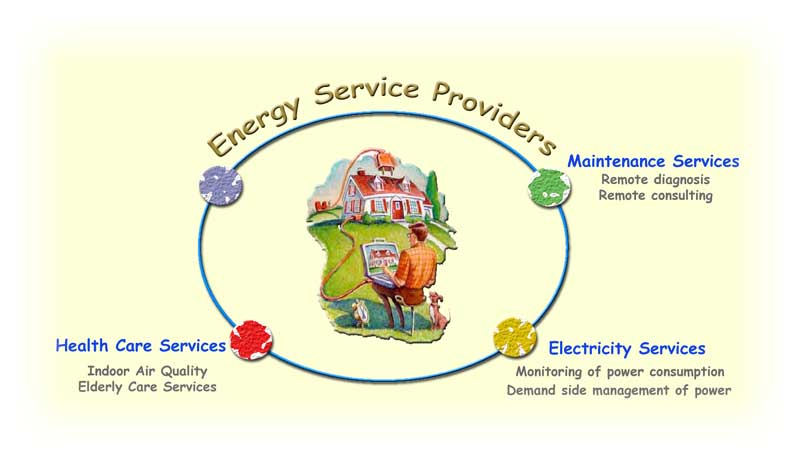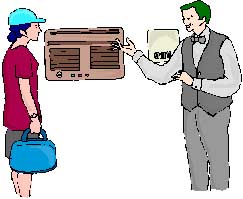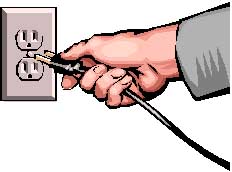 |
PROJECT |
|||||
|
BACKGROUNDEnergy is not an end of itself; instead it has the means of providing a number of services. The first stage of our project was to define all possible energy service providers that could exist in the residential sector. Health
Care Services Health care has changed dramatically over the past century. The needs of the modern community extend far beyond what a single hospital can provide. Effective healthcare requires an integrated delivery system of primary care and specialized services. These services involve the monitoring of various types of information (such as body temperature, blood pressure, etc). Hence the indoor environmental conditions can be modified according to the customer's own perception of a comfortable environment.
These services might involve remote diagnosis of the appliance's operating status. Maintenance's service centre would be able to provide real time monitor of appliances. In addition it would also advise the customers on when their appliances require maintenance or even technical service. As result more efficient operation is achieved and system failure is prevented. Electricity
Services The energy service company will be able to provide monitoring of power consumption and controlling of appliances. Hence the electric bill would be cut down significantly. An additional function would the "orchestration" of load profiles (i.e. Smoothing of electricity Load Profile).
From the above three Energy Service Providers, electricity providers was chosen to be our research subject for this project. As disposable income increased, the demand for a level of comfort, continued to push up energy use in households. This trend has been particularly evident for electricity demand. The number of electrical appliances has increased significantly, even as the appliances have become more efficient in their use of energy. Principal areas of end-use growth have been in domestic electrical appliances and for heating and cooling. On the other hand, the shares of hot water supply and kitchen use are decreasing. Firms and households view energy as an input for maintaining a home. They are less concerned with how many KWh they purchase than with the services such as heat, light and appliances that electricity provides. This relationship provides the basis of demand-side management. It is the conservation of energy through reduced demand, to the benefit of consumers, the environment and utility shareholders. |
|||||
|







 Maintenance
Services
Maintenance
Services